Occupational Safety Training in Textile and Garment Industry
99,000 ₫
Note: The above price is calculated for one person, the price may fluctuate depending on the number of trainees participating in the course and the movement of the market. For more accurate pricing support, please refer to the quotation table or contact our consulting staff directly.
The Textile and Garment Occupational Safety Training course is a course that equips trainees with Group 3 occupational safety knowledge. The course will raise awareness about preventing occupational accidents during the operation of textile machinery for trainees. Accordingly, the occupational safety training content is aligned with Article 18 Decree 44/2016/ND-CP.
Table of Contents
Toggle1. Overview of the Textile and Garment industry
a. What is the Textile and Garment industry?
- The Textile and Garment industry is primarily concerned with the design, manufacturing and distribution of yarn, fabric and clothing. Raw materials can be natural or synthetic using products from the chemical industry.
- Most textile and garment factories nowadays use modern industrial manufacturing machines to serve the process of creating products from fabric.
- In Vietnam in particular and the world in general, one similarity in the textile and garment industry is that it is an ancient industry from the early days when industry began to bloom.
- Textile and garment products are essential in people’s lives in any era. From clothes, bags, hats… and products made from fabric. All are diverse in designs and colors.

- In textile and garment workshops and factories, people often change manufacturing processes to suit new designs, to keep up with fashion trends.
- Nowadays, the textile and garment industry has made many advances in technical technology. Specifically, new material technology has been applied to produce more durable and comfortable fabrics.
b. Types of manufacturing machinery in the Textile and Garment industry
Nowadays, modern machinery serving the mechanical engineering industry is very popular. Replacing traditional working methods. The more technology integrated into machines, the more it helps improve work efficiency. Ensuring the best product quality. Current mechanical factories also cannot lack such types of machinery:
1. Fabric dyeing machine
- A fabric dyeing machine is a type of machine that changes the color of fabric using high-efficiency centrifugal technology used specifically for dyeing machines. The machine body and parts in contact with the wet dyeing liquid are made of highly corrosion-resistant stainless steel
- The centrifugal system in the machine has the function of optimizing the dye circulation system, which helps the light and dark shades on each square centimeter of fabric to be more uniform.

2. Fabric spreading machine
- A fabric spreading machine is used to stack many layers of fabric, especially of the same width and length, stacked on top of each other and is the foundation step for the fabric cutting stage.
- The machine’s task is to adjust and ensure the exact position for each layer of fabric as well as the thickness during spreading.

3. Fabric cutting machine
- A fabric cutting machine is the most common device with the main use of cutting a large volume of fabric and contributing to increasing labor productivity.
- The fabric cutting machine has a cutting blade part with a double-toothed structure that goes in reverse or a multi-sided circular cutting blade with a blade size ranging from 100mm to 200mm.

4. Computerized embroidery machine
- A computerized embroidery machine is a type of machine that operates according to a program controlled by a specialized computer system. Because of its intelligent operating properties, the machine can embroider many patterns at the same time with almost absolute accuracy.

5. Sewing machine
- A sewing machine or sewing machine is a type of machine used to sew fabric and various other materials with thread. The sewing machine was invented during the first industrial revolution to reduce the sewing work that had to be done in clothing companies.

c. Typical businesses in the Textile and Garment industry
Typical businesses in the textile and garment industry in Vietnam include:
- Vinatex: Vinatex is the largest textile and garment group in Vietnam, owning more than 150 member companies and accounting for about 50% of the market share in Vietnam’s textile and garment industry. Vinatex’s products are exported to more than 50 countries around the world.
- Thanh Cong Textile & Garment: A leading textile and garment company in Vietnam with many famous brands such as PALEO, Foci, Paradise, manufacturing and trading clothing, handbags, and footwear products.
- Duc Giang Corporation: Established in 1986, Duc Giang is one of the leading companies in manufacturing and trading textile and garment products in Vietnam with a modern textile and garment factory system, products include clothes, shoes, and bags.
- TNG Investment and Trading Joint Stock Company: A small and medium-sized textile and garment company among the typical enterprises of the textile and garment industry in Vietnam. However, TNG is evaluated as having good product quality and a stable market share in the country and internationally.
- Viet Tien Garment Corporation: Viet Tien is one of the largest clothing brands in Vietnam with more than 1500 stores and nearly 4000 agents nationwide. The company focuses on manufacturing high-quality and reasonably priced men’s and women’s fashion clothes.
d. Specific jobs in the Textile and Garment industry
Specific jobs in the textile and garment industry include:
- Design staff: Create new drawings and designs for textile and garment products.
- Research and development staff: Research and develop new textile materials, design new manufacturing machinery, help improve and optimize the manufacturing process.
- Sewing technician: Work with manufacturing machinery to cut, sew and complete textile and garment products.
- Tailor: Use tools and manual techniques to sew textile products.
- Quality control: Supervise the manufacturing process to ensure the quality of textile and garment products meets the requirements.
- Production management: Manage manufacturing activities such as managing employees, equipment, manufacturing processes, costs and production progress.
- Sales staff: Find new customers, advise and sell textile and garment products to customers.
- Marketing staff: Carry out advertising campaigns, brand orientation and manage marketing activities.
- Shipping staff: Ensure textile and garment products are transported to sales locations or customers safely and on time.
- Machinery maintenance staff: Perform maintenance, repair and improvement of manufacturing machinery to ensure continuous production and minimize incidents.
e. Products in the Textile and Garment industry
The textile and garment industry is one of the major industries in Vietnam, with a diverse development of products. Below are some typical products in the textile and garment industry:
- Clothing: this is the main product of the textile and garment industry, including men’s, women’s, and children’s clothes, sportswear, swimwear, underwear, loungewear, uniforms, etc.
- Fabric: the textile and garment industry also manufactures different types of fabric, including knitted fabric, woven fabric, wool fabric, silk fabric, cotton fabric, etc.
- Fashion accessories: in addition to clothing and fabric, the textile and garment industry also manufactures fashion accessory products such as scarves, gloves, socks, stockings, etc.
- Floor mats: the textile and garment industry also manufactures floor mats for works such as hotels, airports, restaurants, etc.
- Industrial products: in addition to products for the consumer market, the textile and garment industry also manufactures industrial products such as nets, cables, filter fabrics, etc.
- Industrial textile and garment products: Some specialized textile and garment products are used in industry, such as pipe wrapping fabric, filter fabric, tarpaulin, etc.
- Blankets, comforters, pillows: Interior products such as blankets, comforters, and pillows are also made from fabric. Cotton, flannel, and polyester fabrics are common types of fabric used to make these products.
- Curtains: Curtains are also made from many different types of fabric, including cotton, silk, polyester, and linen. Depending on the style and purpose of use, users will choose the right type of fabric for curtains.
- Bags: Bags are also products made from fabric, including canvas, cotton, and nylon. The type of fabric chosen depends on the purpose of use and the features of the product.
- Pillowcases: Pillowcases are products made from cotton or polyester fabric, with many different styles and colors to suit the needs of users.
- A backpack is a type of shoulder bag, designed to carry belongings while traveling, especially when going to school, work or traveling. A backpack can have many different compartments and pockets to suit usage needs.
- National flag (flag): is the national symbol of a specific country. It is often displayed on flags and other national banners such as seals, banknotes, and official documents.
In addition, there are many other products made from fabric such as towels, face towels, placemats, bedspreads, and many other interior products.
2. Overview of the Textile and Garment industry safety training course
a. What is occupational safety training in the Textile and Garment industry?
- Occupational safety training in the textile and garment industry consists of classes that equip workers with awareness of how to prevent occupational accidents. Accordingly, workers in the textile and garment industry are subjects belonging to group 3.
- The occupational safety training course will help workers identify and avoid dangers, and limit the risks of occupational accidents during work.
REGISTER FOR OCCUPATIONAL SAFETY TRAINING SERVICES
b. Training time
- First-time safety training time
- The total training time is at least 24 hours, including the inspection time.
- 8 hours of theoretical study on the policy system, law on occupational safety and health
- 8 hours of theoretical study on basic knowledge of occupational safety and health
- 4 hours of theoretical study on specialized training content
- 2 hours of practical study on specialized training content
- 2 hours of theoretical review at the end of the training course
The safety training center will allocate the time into many training sessions depending on the work schedule of the employees. But usually, there will be 6 training sessions, the course will last 3 days, on the condition that the manufacturing company can arrange continuous study time.
- Periodic safety training time
- Before the occupational safety card expires, if an employee wants to renew it, they must undergo a periodic occupational safety training course, with the periodic safety training time being at least 50% of the first-time safety training time.
Explanation: The total periodic occupational safety training time is at least 12 hours, including the inspection time. After completing the periodic training course and passing the required test, the employee will be re-issued, and the occupational safety card will be extended.

c. Content of the training course
| STT | TRAINING CONTENT | TRAINING TIME (HOURS) | |||
| Total number | Of which | ||||
| Theory | Practice | Inspection | |||
| I | System of policies and laws on occupational safety and health | 8 | 8 | 0 | 0 |
| 1 | Overview of the system of legal documents on occupational safety and health. | 6 | 6 | ||
| 2 | System of occupational safety and health technical standards and regulations. | 1 | 1 | ||
| 3 | Specific regulations of state management agencies on occupational safety and health when newly constructing, expanding or renovating works, facilities for manufacturing, using, preserving, storing and inspecting types of machinery, equipment, materials, and substances with strict requirements for occupational safety and health. | 1 | 1 | ||
| II | Basic knowledge of occupational safety and health | 8 | 8 | 0 | 0 |
| 1 | Basic knowledge of dangerous and harmful factors at the workplace. | 4 | 4 | ||
| 2 | Methods to improve working conditions. | 1 | 1 | ||
| 3 | Safety culture in manufacturing and business. | 1 | 1 | ||
| 4 | Rights and obligations of employers, employees; policies and regimes on occupational safety and health for employees; functions and duties of the network of occupational safety and health officers. | 1 | 1 | ||
| 5 | Occupational safety and health rules, signs, safety and health signs and use of safety equipment, personal protective equipment; professional skills, first aid skills for occupational accidents, prevention of occupational diseases. | 1 | 1 | ||
| III | Specialized training content | 6 | 4 | 2 | 0 |
| General knowledge about types of machinery, equipment, substances that generate dangerous and harmful factors; analyzing, assessing, and managing risks related to occupational safety and health, and safe working procedures with machinery, equipment, and substances with strict requirements for occupational safety and health. | 6 | 4 | 2 | ||
| IV | Checking safety training content at the end of the training course | 2 | 2 | 0 | 0 |
| Total | 24 | 22 | 2 | ||
See more training content of 6 groups
d. Occupational safety training certificate
- After completing the occupational safety training course and passing the test, the employee will be granted a group 3 occupational safety certificate.
- The occupational safety card will clearly show information such as: full name, date of birth, specific job and working environment. At the same time, it also has the training time, red stamp and signature confirming completion of the training course.
- According to the regulations on issuing safety cards stated in Clause 2 of Article 24 of Decree 44/2016/ND-CP, it is divided into 2 cases:
- In the case that the employer and the employee have a labor contract, the employer must sign, stamp and seal the safety card for the trained person in group 3 after completing the training course from the occupational safety training unit and passing the test.
- In the case that the employee is a freelancer, seasonal worker, or does not have a labor contract, the training unit must sign, stamp and seal the safety card for the employee after completing the training course from the occupational safety training unit and passing the test.

3. Identifying hazards in the Textile and Garment industry
The main hazard in the textile and garment industry is the moving parts of machinery and working tools. Dyeing and fabric spreading machines can cause injury to workers during work such as: entrainment, impact, and jamming. The level of injury from the hazard depends on the machine’s capacity. Below we will list the hazards for you to identify and work safely in the mechanical engineering industry.
- The working environment in a textile and garment factory always contains microfibers in the air.
- Fabric dyeing stages often use many chemicals that can cause respiratory failure if inhaled.
- Moving parts in fabric spreading machines create the risk of hands being pulled into the machine while working.
- Being cut if you accidentally touch the sewing needle of sewing and embroidery machines.
- Exposed electrical wires, poorly connected wire circuits. Or machinery with electrical leakage can cause electric shock to workers.
- Workers do not wear personal protective equipment. As well as using poor quality personal protective equipment when working with textile machines.
- Long pants and shirts, long hair that is not neatly tied up are at risk of being pulled into the machine.
4. Common types of accidents in the Textile and Garment industry
The mechanical engineering industry is one of the professions with a high level of danger and risk. Below is a list of common types of accidents to help you understand and have ways to prevent them and work safely in the mechanical engineering industry.
- Being pulled into the machine while the machine is operating due to accidentally getting a sleeve or hand caught in a moving part.
- Dyeing chemicals splashing into the eyes or on the skin causing allergies or injuries.
- Being impaled when touching the machine while the embroidery or sewing machine is operating.
- Poor quality protective equipment, when a mechanical collision occurs, it will cause injury to the worker.
- Broken textile machinery and equipment leading to inaccurate operation during use will cause occupational accidents.
- Getting an electric shock when accidentally touching an exposed wire or a machine with electrical leakage.
- Workers who have not been trained in occupational safety but still work in a mechanical factory.
- Poor working conditions such as lack of light, high temperature, and excessive noise.

5. Safety measures for the Textile and Garment industry
- Equip machines with clear origins and regular quality checks.
- Design a safe and scientific operation process to limit the risk of accidents.
- Provide professional training for machine operators when working with machinery.
- Provide occupational safety training for workers working with machinery with high safety features.
- Fully equip personal protective equipment when working in a textile and garment factory.
- Regularly maintain machinery, avoiding situations where machines are broken but still operating.
- Do not allow the machine to operate when there is no one controlling it.
- If a malfunction or error in machine operation is detected, stop the machine immediately.
- Periodically organize work environment monitoring in factories and enterprises, collect and analyze factors harmful to workers, thereby adjusting to reduce the level of harm to prevent occupational diseases for them.

6. Benefits of the occupational safety card in the Textile and Garment industry
An Toan Nam Viet provides businesses with great benefits after completing occupational safety training courses according to the regulations in Decree 44/2016/ND – CP on occupational safety and health work, Companies, factories, enterprises.
- Employees can identify the potential risks of occupational accidents, thereby having preventive measures to avoid occupational accidents.
- Your Business can establish risk prevention measures in the manufacturing, operation and maintenance processes.
- Minimize costs when there is a risk of losing occupational safety.
- The uninterrupted manufacturing process will help increase labor productivity and product quality.
- Comply with occupational safety laws, avoiding legal risks.
- Create prestige and professionalism in all aspects, thereby elevating your business brand.
Nam Viet’s training courses are the solution to prevent and combat external factors that affect each individual so that they can avoid danger that can lead to injury or, more seriously, death.
REGISTER FOR OCCUPATIONAL SAFETY TRAINING SERVICES
7. Customer feedback after completing the training course
An Toan Nam Viet has many years of experience in the mission of accompanying many businesses in Vietnam in general and in the southern provinces in particular. And that responsibility is something very valuable to Nam Viet, which is why Nam Viet’s Occupational Safety Training is increasingly focused on becoming more professional. The motivation for An Toan Nam Viet to grow strong to this day comes from the positive feedback and suggestions from businesses. Below are the feedbacks from our partners we have served.
Bac Nam E&C Investment and Construction Joint Stock Company
“The first time I used An Toan Nam Viet’s service, I was very surprised by the enthusiastic 24/7 support of the consulting team. The class organization was very fast and convenient for our company, thank you very much for Nam Viet’s service!”
Hoa Dat Construction and Trading Joint Stock Company
“Nam Viet’s service has helped us a lot in simplifying occupational safety and completing safety records for the work process. The consulting team is enthusiastic and timely in answering our questions. 5 stars for Nam Viet”
See more customer interviews after using An Toan Nam Viet’s service
8. An Toan Nam Viet’s Occupational Safety Training capacity
An Toan Nam Viet is a reputable and quality occupational safety training center in Vietnam today. With occupational safety training sessions held continuously at manufacturing workshops, factories or construction sites across the country (63 provinces and cities in Vietnam).
REGISTER FOR OCCUPATIONAL SAFETY TRAINING SERVICES
- Occupational safety training license
- An Toan Nam Viet has been inspected by the Department of Labor – Invalids and Social Affairs and granted a certificate of eligibility to operate occupational safety and health training. This further strengthens our occupational safety training capacity.

- Materials and lectures
- Before occupational safety training materials are put into occupational safety training courses, they have been reviewed and censored to ensure that the lecture is always correct in terms of knowledge and effective when applied.
- The teaching method of the lecturers is synchronized according to the teaching standards of An Toan Nam Viet, which is a method that experts on occupational safety and health training have researched and drawn from the teaching process to bring the highest knowledge acquisition efficiency for students.
- Facilities
- Controlling factors in the classroom that affect the training process will increase teaching performance and the effectiveness of students’ knowledge acquisition.
- The facilities supporting our training course always have spacious classrooms that meet standards for area, lighting, training equipment … etc…
9. Nationwide Reputable and Quality Occupational Safety Training Center
- At An Toan Nam Viet, we always prioritize professional dedication to occupational safety training. For us, conveying knowledge on how workers can protect themselves so they have a safe foundation for their livelihood is also contributing to national development.
- To ensure effective training, we carefully prepare every detail, no matter how small. From preparing tools, teaching equipment to curricula, materials, sound, and lighting.
- Our occupational safety training instructors are experts with many years of experience in the field. They even have research works identifying hazards in all industries and methods to prevent them.
- Lectures are compiled from practical experience and delivered in a vivid, easily understandable way for workers. These elements help workers feel comfortable during training and effectively absorb the knowledge we provide. Naturally, the knowledge delivered strictly follows Decree 44/2016/ND-CP.
- From this, workers learn many measures to prevent hazards and ways to protect themselves, while also applying them appropriately in real work situations.
- Our safety training center proudly provides professional and reputable occupational safety training services with the following advantages:
- Competitive training costs while ensuring training quality.
- Flexible training schedules adapted to the company’s manufacturing situation.
- Quick and lawful procedures for issuing occupational safety training certificates.
- Instructors with many years of professional experience.
- Classrooms are controlled for factors affecting training to enhance teaching efficiency and knowledge absorption.
- Lectures are designed to suit occupational safety practices in enterprises.
- An Toan Nam Viet works dedicatedly and professionally to provide accurate and fast support for clients.

10. Additional Occupational Safety Training References
- Occupational Safety Training Materials for Textile Industry
- Safety Training Materials for Leather, Feather, and Silk Industry
- Occupational Safety Training Materials for Mechanical Industry
- Group 3 Occupational Safety Training Test
- Occupational Safety Multiple-Choice Test for Textile Industry
- Slides for Occupational Safety Training in Textile Industry
11. Occupational Safety Training Activities
10 reviews for Occupational Safety Training in Textile and Garment Industry
No comments yet

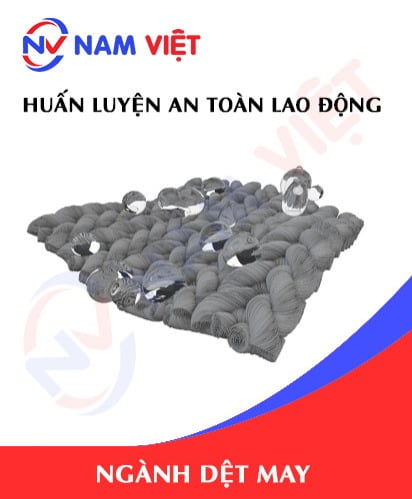
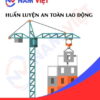
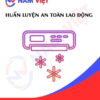



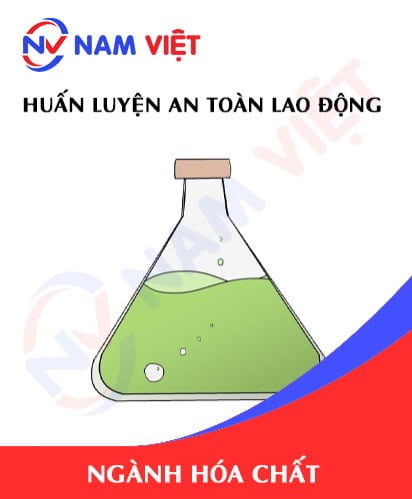
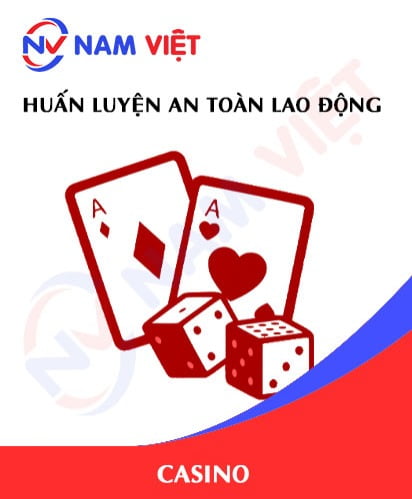
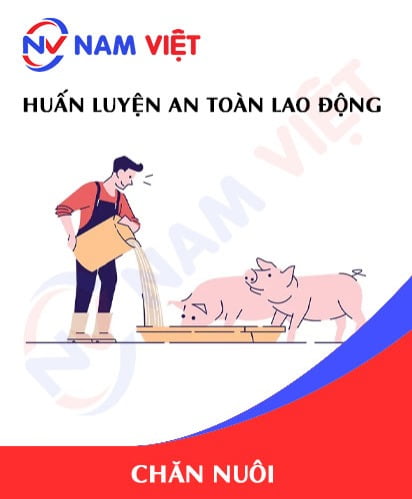
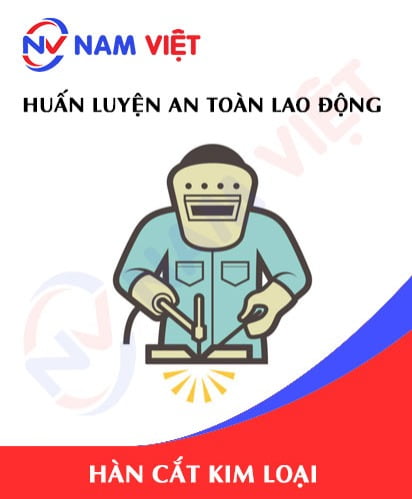
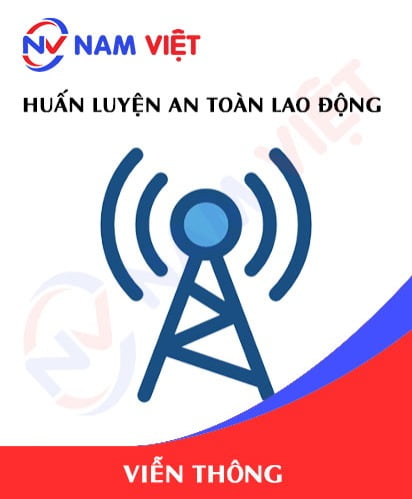
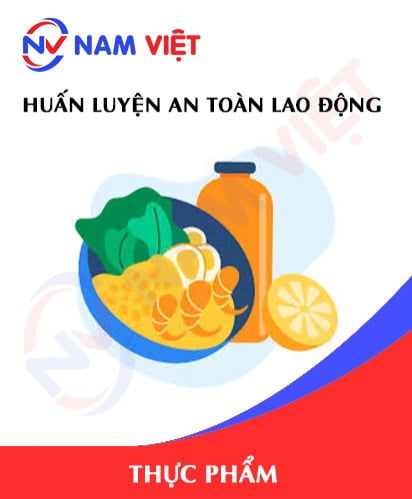
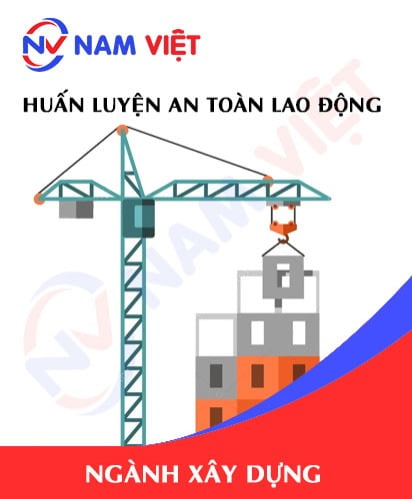
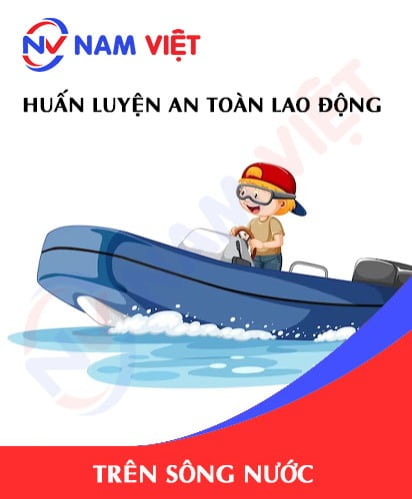
huynhtran_dathien22
Sự đóng góp tích cự của Nam Việt cho an toàn lao động tại Việt Nam là không thể chối cãi. An Toàn Nam Việt đã trao món quà về sức khỏe lao động cho công nhân của chúng tôi, để họ có thể bảo vệ bản thân mình. Thay mặt Anh/Chị/Em công nhân, tôi gửi lời cảm ơn đến công ty Nam Việt rất nhiều.
hoangxuanloc_kentai
tổ chức rất nhanh và đúng giờ, thầy dạy an toàn rất có tâm
kendy_trannguyen_land
Dịch vụ An Toàn Nam Việt rất tuyệt vời!. Các bạn đã hỗ trợ công ty của chúng tôi rất tận tình và chu đáo
tinaxuanquynh_saigon
Tư vấn rất sâu sắc, giúp tôi giải quyết những khó khăn về chuyên môn trong lĩnh vực huấn luyện an toàn.
huynhdanhstanley241
Giảng viên giảng rất hay, có lẽ thầy cũng lớn tuổi rồi nên nhiều kinh nghiệm.
quythu_duanuong
Khóa huấn luyện ok lắm!
xingfutan7_dongnai
trung tâm huấn luyện an toàn rất uy tín, tận tâm tư vấn.
vanhieutran2306
Bài giảng của thầy rất tuyệt vời, ngồi nghe mà lôi cuốn lắm nha. Công tác tổ chức lớp học cũng chu đáo nữa, nếu lần sau mà tôi có nhu cầu huấn luyện an toàn chắc chắn tôi sẽ tìm đến Nam Việt.
hoamaicontrusterdn
Nam Việt tư vấn cho tôi rất nhiệt tình, giải đáp thắc mắc của tôi một cách chu đáo. Về điều này thôi là đã muốn sử dụng dịch vụ của trung tâm huấn luyện rồi.
kytucxathienhuong
Nhanh chóng và rất chu đáo, bên Nam Việt tổ chức khóa huấn luyện khiến tôi rất hài lòng, cho 5 sao luôn!